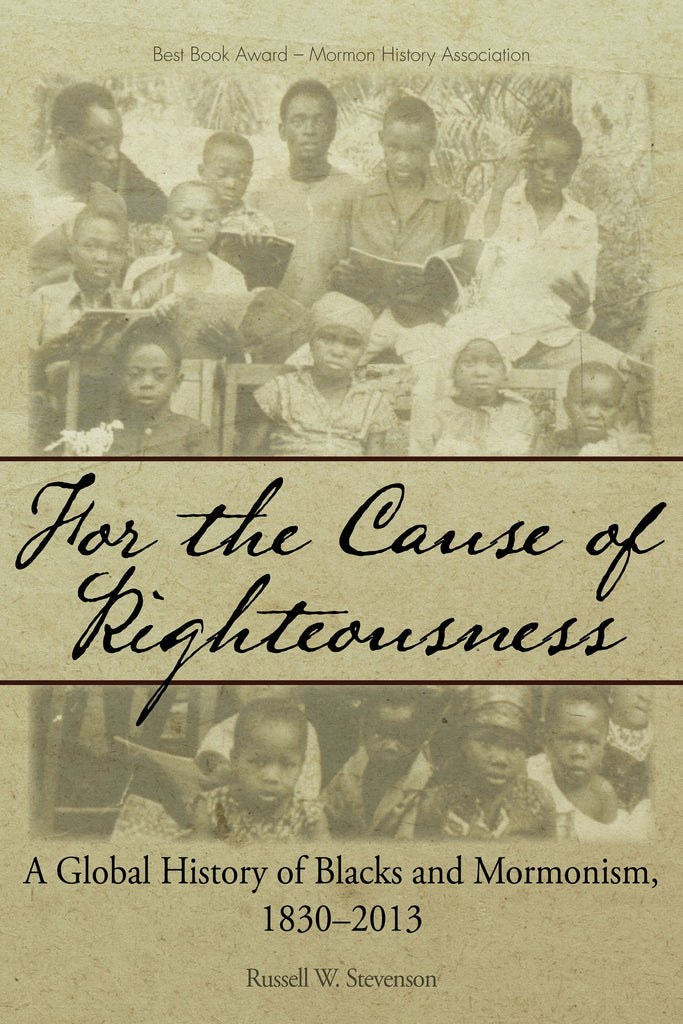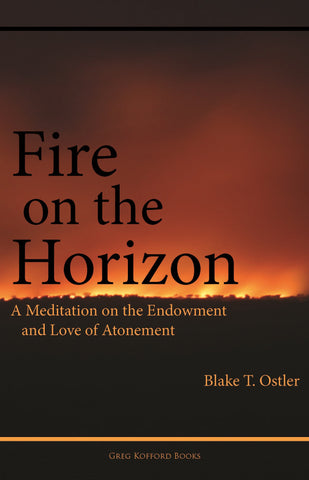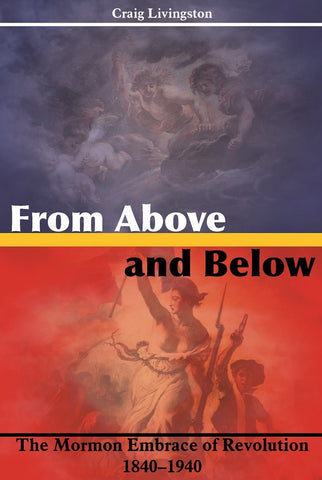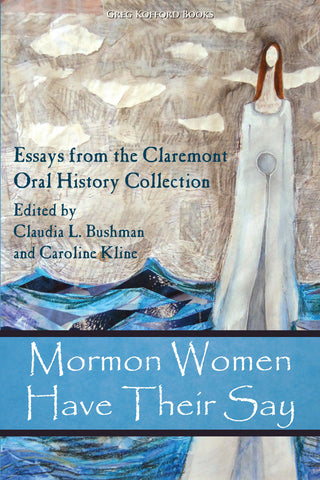For the Cause of Righteousness: A Global History of Blacks and Mormonism, 1830-2013
$32.95
-
“Breaks new ground with its mix of international scope, comprehensive chronology, and theoretical vision.” — Philip Barlow
-
“Brings together a wealth of sources to create this ambitious and quick-moving but detailed overview of the intersection of Latter-day Saint and black history.” — The Journal of Mormon History
- “Scholars will for many years refer to and build upon Stevenson's insights.” — BYU Studies Quarterly
2015 Best Book Award, Mormon History Association



Available in ebook for Kindle, Nook, Kobo, Google Play, and Apple.
Also available through Amazon and Deseret Book.
Download a free sample preview.
Book Description:
This book broaches one of the most sensitive topics in the history of Mormonism: the story of the LDS community’s turbulent relationship with the black population. For the Cause of Righteousness: A Global History of Blacks and Mormonism, 1830-2013 promises to tell a story of how an American religious community could wander through the rocky landscape of American racial politics, all while hoping to hold onto its institutional integrity in the face of attacks from both within and without. Drawing on a rich array of archival documents and oral testimonies, For the Cause of Righteousness suggests that understanding race and Mormonism requires far more than watching the movements of well-dressed men on North Temple; it calls for understanding the dynamics of global Mormon communities ranging from Mowbray to Accra, from Berkeley to Rio Di Janeiro.
But as any historian will say, primary sources matter. Thus, For the Cause of Righteousness offers up not only a narrative history of the global black Mormon community but also an anthology of primary source transcripts: letters, newspaper articles, and speech transcripts, all in hopes that readers might take one more step toward understanding a story that simultaneously inspires, troubles, and urges Latter-day Saints into understanding a provincial religion that has reached global proportions.
AuthorCast Interview with the Author:
Comprehensive Table of Contents:
.
Acknowledgments
Preface: Growing Up White
Part 1: The History
1. Black and White, Bond and Free 1830–47
Joseph Smith’s Racial Coalition
2. Cursed, 1845–90
3. The Long Night, 1890–1960
Good Servants
A Branch of Love
The Native Boys
“Happier Races”: Mormonism in Brazil and Cuba
4. Dawning: From Aba to Detroit, 1946–75
Big World
Blue Flowers and Bright Stars
Explorers and Educators
5. This Negro Problem: Mormons and the U.S. Civil Rights Era
6. The World Is Ready, 1970–78
“Everything’s Cool”
Dialogues
“ . . . But by Prayer and Fasting”
The Right People
Aboriginal Ways
Orphans
Pentecost
7. Repairers of the Breach
Embarrassment
“The Lord Chose Me”
Pray for Peace
“We Must Get Rid of Hate”
Buses
Truth
African Zion: Building the Church in Ghana
Somebody Knows
Part 2: The Documents
8. Making Race in Mormonism, 1833–47
W. W. Phelps Urges Moderation on Slavery (July 1833)
The Early Racialization of White Latter-day Saints (1834)
W. W. Phelps Responds to Attacks (February 1834)
Elijah Ables’s Priesthood Certificate (March 1836)
Joseph Smith Defends Slavery (April 1836)
A Non-Mormon Describes Elijah Ables’s Preaching in Canada (1838)
A New York Convert Recalls Elijah Ables (1838)
Jane Manning James Autobiography (1810–93)
Elijah Ables’s Preaching Activities Restricted (June 1843)
Black Elder Q. Walker Lewis Serves in Boston (1844–47)
A Mormon-Turned-Radical Abolitionist in Cincinnati (1855)
Elijah Ables Cracks Down on Dissent in Cincinnati (1845)
9. Origins of the Priesthood Ban, 1847–49
Church Leaders Meet William McCary (March 1847)
Nelson Whipple Recalls the William McCary Episode (1847)
Apostolic Reaction to William McCary (Summer 1847)
Walker Lewis’s Standing in the Church (1847)
Brigham Young Resists with Interracial Marriage (1847)
Brigham Young’s Explanation of the Priesthood Ban: Three Accounts (1849, 1852, 1900)
1849 Account
1852 Account
1900 Account
Benjamin Matthews Finds a Runaway Slave in San Bernadino (March 31, 1849)
10. White Zion, 1852–1903
Brigham Young Defends Slavery and Publicly Announces the Priesthood Ban (February 1852)
An Act in Relation to Service (1852)
Elijah Ables Tells of His Travels West (March 1854)
Brigham Young Offers to Buy and Free a Slave (January 1861)
A Payson Man Inquires about His Racial Status (January 1861)
A Mormon Dissenter Attacks the Racial Doctrine (April 1870)
Church Leaders Discuss Endowing Ables (May 1879)
Jane Manning James’s Campaign to Receive Her Endowment (1880s–1900s)
A Mormon Missionary Writes on the Ku Klux Klan (1885)
B. H. Roberts Suggests a Premortal Origin for the Priesthood Ban (May 1885)
11. A Sleep and a Forgetting: Losing the Black Mormon Heritage, 1902–49
“A Man Named Abel”: Church Leaders Recollect Denying Elijah Ables and Jane Manning James Their Endowment (January 1902)
Booker T. Washington’s “Views of the ‘Mormons’” (June 1913)
A Black Alabaman Joins the Mormons (1912–38)
The Meeks-Nelson-First Presidency Correspondence (1947)
Heber C. Meeks to the First Presidency, July 23, 1947
First Presidency to Lowry Nelson, July 17, 1947, Excerpt
A First Presidency Statement on Blacks and the Priesthood (1949)
First Presidency Statement, August 17, 1949, Lester Bush Version
First Presidency Statement, August 17, 1951, The Berrett Version
12. American Mormons Struggle with Civil Rights, 1953–69
Introduction
BYU Professor Alma Heaton on 1950s Mormon Dancing (1981)
Sterling McMurrin Addresses the NAACP (March 1960)
Hugh B. Brown on Civil Rights (October 1963)
Joseph Johnson Forms “Mormon” Congregations in Ghana (1964)
Ezra Taft Benson Attacks the Civil Rights Movement (1967)
First Presidency Policy Statement (December 1969)
13. Reconciliation, then Truth, 1971-2013
Introduction
A Black Mormon’s Conversion Story (1971)
Lester Bush Questions the Origins of the Priesthood Ban (Spring 1973)
Official Declaration—2 (October 1978)
Fundamentalists Attack the New Policy (July 1978)
Apostle Bruce R. McConkie Acknowledges Limitations of Earlier Leadership (August 1978)
Anthony Obinna Chastises the Twelve (September 1978)
President Gordon B. Hinckley Condemns Racism (2006)
Official Reaction to a BYU Professor’s Racism (February 2012)
Addition to Official Declaration—2 (2013)
Repudiating Past Teachings (December 2013)
Bibliography
Common Abbreviations
References
Index
Q&A with the Author:
.
Q: Your book tackles one of the most controversial aspects of LDS history, one that Latter-day Saints often struggle to discuss with those both outside and within their faith community. What will your book do to further the conversation?
Too often, discussions about Mormonism and race focus on the upper echelons of Church leadership, as though the history could be reduced to a series of proclamations, statements, and official correspondence. We think of it in some of the same ways the diplomatic historians of a former age considered global politics. But the study of race in any contexts begs for more than that. It demands that we understand the relationship as it was lived and breathed on the ground.
Latter-day Saints will find that the story of this relationship reveals not merely a compendium of circulars but an intimate portrait of a people’s journey through the American landscape. W.E.B. DuBois observed that the color line cuts through the heart of the American experience, and it was a line that all classes of Mormon society had to engage: from the Prophet Joseph Smith to the South African tailor, William P. Daniels, to the Payson day laborer, N.B. Johnson.
Q: Several scholarly works have tackled the very questions your book has poised itself to address: Margaret Young and Darius Gray’s Standing on the Promises series, Newell Bringhurst’s Saints, Slaves, and Blacks, Armand L Mauss’s All Abraham’s Children, and, of course, Lester Bush’s seminal article: “Mormonism’s Negro Doctrine: An Historical Overview.” What does your book offer that their works does not?
The novels of Margaret Young and Darius Gray were instrumental in normalizing the black Mormon experience for the Mormon community. While stories of Elijah Ables and Jane Manning James had been long known—Andrew Jenson included Elijah in his LDS Biographical Encyclopedia as the “only colored priesthood holder”—they remained alienated from mainstream Mormon thought. Newell G. Bringhurst became one of the first scholars to trace the particulars of the Mormon community’s engagement with the black population, and Armand L. Mauss performed the seminal service of presenting a sociological profile of the Mormon community’s racial views.
I seek to build on this discussion by situating Mormonism’s interaction with the black community against a global backdrop, including the accounts of the much storied Ghanaian and Nigerian Mormons. The story becomes more layered and complex, a Weberian web of meanings spun across time and space. The black Mormon experience is not merely the Genesis Group, not merely Helvecio Martins, nor is it the rise of Ghanaian Mormonism; it is an intersection of these communities to craft a global narrative that defined the Latter-day Saints’ relationship with the global community for generations.
Q: The book is named, For the Cause of Righteousness, a strangely optimistic title for a topic that forces people to ask such hard questions of themselves. What was the inspiration for this title?
The title comes from priesthood certificate of Elijah Ables, where he is commended with possessing a zeal “for the cause of righteousness.” Styled in the same language as every other Melchizedek Priesthood holder’s priesthood certificate, the document requires that we see the fundamental contradiction that defined early Mormon views on race. Elijah felt at home in Mormonism, even as he faced down what looked like every other white denomination in America. How could a man such as Elijah Ables, likely a runaway slave, continue to affiliate with such a faith? As the priesthood restriction settled into the LDS community, Elijah increasingly became a relic of a forgotten day.
And righteousness is an interesting word—does it mean right action? The state of being correct? Elijah’s story demands that we ask the question of what the Mormon project all about. Joseph Smith hoped that “every man might speak in the name of God, the Lord.” Mormonism’s foundational text, the Book of Mormon, declares that “all are alike unto God, both black and white, bond and free.” Whether one accepts the Book of Mormon as representative of historical events or as a fanciful frontier tale woven from within Joseph Smith’s mind, this text seems to transcend its own textual surroundings—a book beset by ethnic wars, talk of racial cursings, and a massive destruction of a cataclysmic order. The text of Elijah’s priesthood certificate reminds us that there was a time when blacks and whites could enjoy common fellowship in “the cause of righteousness.”
Q: What perhaps less well-known historical figures play prominent roles in your history of Blacks and Mormonism?
Nigerian novelist Chimamanda Ngozi Adichie declared that there are real “dangers” in embracing a “single story” of Africa, let alone blacks worldwide. As a white author with a notably white background (my grandfather was a police officer in the Los Angeles Police Department in the years leading up to the Watts riot), I do no pretend to “give voice” to black figures; they already have a voice that has been, both intentionally and ignorantly, silenced by various white structures of power. Anthropologist Ferdinand Coronil has said of the postcolonial Other that scholars should be careful of efforts to represent it; instead, they should “create conditions that would enable it to represent itself.” It is tempting to sustain particular narratives about black Mormons: humble, faithful, suffering, but devoted, or restless, defiant, and theologically innovative. But no matter the context, we find that Nigeria, Ghanaian, South African, or African-American Mormons exhibit a variety of characteristics.
In addition to the well-known black Mormons such as Elijah Ables and Jane Manning James, I have endeavored to highlight modern black Mormons both in the United States and abroad. William P. Daniels, the branch president over an official Church branch in Mowbray, Capetown, South Africa, enjoyed such a position of respect with white Mormon leaders that they recognized his family as an official unit of the Church and set him apart to be the branch president. I tell the story of the strivings of Igbo Mormons in Nigeria, such as Charles Udo-Ete, in his struggles to establish Mormonism years before the American Church hierarchy would acknowledge their existence. I highlight the pivotal role of Lilian Clark, the English Sufi mystic and visionary, who gave the Ghanaian schoolmaster, Raphael Abraham F. Mensah, some LDS literature, thus starting in motion the events that would lead to the development of Ghanaian Mormonism in the 1960s.
I also endeavor to tell the stories of well-known white Mormon figures, but through the lens of their efforts to grapple with Mormon views on race. I share the story of Sonia Johnson, who was an American housewife in Nigeria long before she became an Equal Rights Amendment activist; her time in Africa compelled her to see race as the defining question of her generation of Mormonism. And we learn to see James E. Faust, once a John F. Kennedy appointee for civil rights action, not merely as one of “the Brethren” but as a man committed to maintaining his faith in Mormonism even while his political views push up against the accepted wisdom of his ecclesiastical colleagues.
Q: Hasn’t the LDS community moved beyond race? Why focus on old wounds?
Racial thinking works in complicated ways; we fool ourselves if we think that racism fits neatly under a single description. While, as Armand L Mauss has demonstrated, the LDS community is no more likely to embrace racial thinking than other religious groups, the Mormon community’s troubled relationship with the black community has bequeathed modern Mormons a host of consequences. But likely out of a fear of feeling guilty or culpable for past racial sins, we tend to shy away from sustained analysis. For some, they simply don’t feel the need to do so; their neighborhoods, friends, and family members are white, after all. Why bring up controversy?
Because our ignoring it does not make it disappear; and believing that we can is only a comforting (and expensive) mythology, at best—and one that is only available to white people who can enjoy the luxury of racial self-isolation. For others, we might share a few stories about Jane Manning James, but even then, we do so without fully recognizing that her story presents a case of a woman of color being denied the full blessings of the gospel based not on her personal actions but the color of her skin. (And her correspondence reveals that she had not been taught the “less valiant in premortality” explanation that had just become de rigueur.) For people of African descent, pretending as though the priesthood restriction never happened is an act of monumental denial. Doing so would raise as many eyebrows as “forgetting” that there was a trans-Atlantic slave trade, that there was systemic segregation in most of America throughout the better part of its history, and that American Mormonism kept African Saints at arm’s length even while other missionary societies were eager (perhaps too eager) to bring Christianity to the continent.
Q: In a recent essay the LDS Church has “disavowed” past statements that black skin is a sign of divine disfavor; does your book address these statements and how does it address this recent disavowal?
In the Documents portion of the volume, I provide an excerpt from the famed “Race and the Priesthood” statement, as well from the March 2013 preface to Official Declaration #2. I cast the disavowal as a part of a longstanding struggle to come to grips with a practice that most leaders felt the need to justify, sometimes through rather innovative theological methods. As Sterling M. McMurrin said, from the beginning, the explanations for the priesthood restriction have been “shot through with ambiguity”; even Spencer W. Kimball expressed frustration at what he felt had been the Lord’s lack of instructions on the matter. The disavowal marked the happy end of generations of failed explanations, theological gymnastics, and deficient teachings.
Q: The second half of this book consists of an anthology of primary source documents—which will make it a first in this area of research. Tell us about the process you used to select and contextualize the documents.
At times, it is easy to fixate on speeches made at the Tabernacle, comments made in the halls of the Church Office Building, or an address given by a white Church leader to an overwhelmingly white congregation. Important as these comments may be, they make up a story of White Mormons Talking About Black Mormons. This tendency only perpetuates the problem of representation, that is, of failing to create conditions in which black Mormons are able to express themselves.
More precisely, I hope to show that there was more—much more—to the black-Mormon relationship than the priesthood restriction, as central as that is to the narrative. So I sought to select documents that spoke to the relationships found within these two communities. One document, a letter with Elijah Ables’s signature, reveals experiences traveling on the Overland trail westward. Racial difference is not discussed in the letter, which in itself reveals something about the black Mormon experience: sometimes they experienced extraordinary things with no immediate pertinence to their racial experience. Other documents give voice to the Church’s ambivalence to the “civil rights movement” (though Ezra Taft Benson would distinguish this from the idea of “civil rights”). And to the extent possible, I endeavored to give voice to African Mormonism (primarily in Nigeria and Ghana) by presenting the voice of the “African Saints Without Baptism,” as E. Dale LeBaron styled them. How did they make Mormonism without the influence of a Church that was becoming increasingly structured and “correlated” in its ideas of orthodoxy? With each document, I hoped to re-create the world that the author of the document experienced, to show the kinds of forces that forged the environment in which they considered their words to be necessary or welcome.
Q: Why include both a narrative and a documentary history? What advantage does that offer to the reader?
The narrative offers people the opportunity to read a story, cover to cover, filled with people who are both heroes and villains (sometimes, at the same time). Through the narrative, I can at least hope to portray the story as the story of rising, falling, and sometimes coasting along in the Doldrums. It enabled me to cast the picture from a wide-angle lens; I did not need to bind myself to the stories included in a specific document.
But I wanted to include a documents section so that people could stare this thing in the face. I have heard several parents complain that high school history teachers do not make an effort to use original sources in teaching their students, and I agree with the critique. We need to see these words for themselves; we will never be able to stare our racial past in the face without them. Particularly when something questions your prior assumptions, it becomes too easy to dismiss it out of hand as exaggerated, or out-of-context. While concerns fabrication, exaggeration, and contextualization all should remain at the front of our minds in consuming any historical account, such responses are often used to validate our desire not to engage the tough realities. President Dieter F. Uchtdorf has cautioned Latter-day Saints about “drifting aimlessly on an ocean of conflicting information, stranded on a raft we have poorly pieced together from our own biases.” While there is much research to be done on this topic—research I intend to continue over the coming years—I hope that this book will bring us one step closer to recognizing that we don’t need to settle for flimsy wood when we navigate this, the most tumultuous topic in the study of LDS history.
Praise for For the Cause of Righteousness:
“In Russell Stevenson's For the Cause of Righteousness: A Global History of Blacks and Mormonism, he extends the story of Mormonism’s long-standing priesthood ban to the broader history of the Church’s interaction with blacks. In so doing he introduces both relevant atmospherics and important new context. These should inform all future discussions of this surprisingly enduring subject.” — Lester E. Bush, author of “Mormonism’s Negro Doctrine: An Historical Overview”
“Russell Stevenson has produced a terrific compilation. Invaluable as a historical resource, and as a troubling morality tale. The array of documents compellingly reveals the tragedy and inconsistency of racial attitudes, policies, and doctrines in the LDS tradition, and the need for eternal vigilance in negotiating a faith that must never be unmoored from humaneness.” — Terryl L. Givens, author of Parley P. Pratt: The Apostle Paul of Mormonism and By the Hand of Mormon: The American Scripture that Launched a New World Religion
“The story of Mormons and blacks shares much with the history of race in America. The Mormon tale is further laden with entanglements peculiar to itself––often fraught, sometimes inspiring. For the Cause of Righteousness breaks new ground with its mix of international scope, comprehensive chronology, and theoretical vision. It recognizes that notions of race are not merely dictated from the pinnacles of hierarchy, and it offers a complement of narrative analysis and illuminating primary documents. This is a notable study.” — Philip Barlow, author of Mormons and the Bible: The Place of the Latter-day Saints in American Religion
“In this book Russell Stevenson has given us a collection of essential documents for understanding the relationship between Mormonism and race. Most critically, he works to broaden our view beyond the conventional American narrative of Mormon history, helping us to understand how the faith’s complex relationship toward race has affected its growth in and outside the United States.” — Matthew Bowman, author of The Mormon People
“This deeply-researched volume attending to race in the broad sweep of Mormon history—both in the United States and internationally—performs a singular scholarly service. Attuned to the complexities in this sweeping, dynamic story, Stevenson shows the ongoing negotiations between church leaders and ordinary members, as well as an ever-changing spectrum of opinion amongst those leaders. His choice of documents allows him to tell a story at once of continuities, glacial change, and dramatic turning points that will provoke discussion as well as enlighten readers.” — Matthew Mason, Associate Professor of History, Brigham Young University
“Global in scope and local in detail, this deeply-researched history is relevant for all seeking to understand the complicated interactions between doctrine and culture, and leader and congregant, as Mormonism moves into the 21st century. Told through the voices of women and men in the United States, Nigeria, Ghana, South Africa, Brazil, and beyond as they attempted to understand the role of race in the LDS Church and its teachings, this work is a crucial reminder for all of us that whatever our differences, ‘all are alike unto God.’ The stories Stevenson brings out of archival obscurity are going to be with us for a long time. As they should be.” — Robert Tabor, National Director of Mormons for Obama
“Russell Stevenson has provided an impeccable collection of research to shed light on the historical space where two nineteenth-century minorities—Mormons and Blacks—converged and co-existed. This documentary reader reveals the struggle of the fledgling church to navigate the difficult territory between its vision, its emerging doctrine, and the widely-held social and cultural prejudices of its day. The documents show that the Church’s maturation process subsumed pain, progress, shame, yearning, and increased clarity over time. For the Cause of Righteousness offers a balanced and thorough compilation of the available research. The text begs the reader to acknowledge, reflect, and reconcile the sometimes disappointing tendencies of human nature.” — Stephanie Sorenson, author of Covenant Motherhood: Reflecting the Role of Christ in Our Lives
“For The Cause of Righteousness is an honest look at an often misunderstood subject within the LDS Church. Russell Stevenson creates an easy to understand narrative that takes the reader from casual observer of the Church's past to well-rounded historian. Bold and thought provoking, it approaches a difficult subject with the sensitivity and respect it deserves.” — Richie T. Steadman, founder of The Cultural Hall Podcast
“You might wonder what a White man could possibly say to two Black women about Black Mormon history. Surprisingly a whole lot! As people who consider ourselves well informed in African-American Mormon History, we found a wealth of new information in For the Cause of Righteousness. Russell Stevenson’s well-researched exploration of Blacks and Mormonism is an informative read, not just for those interested in Black history, but American history as well.” — Tamu Smith and Zandra Vranes (a.k.a. Sistas in Zion), authors, Diary of Two Mad Black Mormons.
“As I teach on this subject around the world, the most common and consistent question coming out of the significant shift in paradigm is ‘How could this have happened?’ Russell has done a wonderful job pulling together an incredible amount of historical accounts sufficient for every reader to clearly understand how this could have and indeed did happen. I applaud this great effort and attention to this much needed topic and history. This work will become a resource for many to come and find a wealth of stories and history upon which they can expand both their knowledge and research efforts” — Marvin Perkins, co-author of the Blacks in the Scriptures
“Russell Stevenson brings together a wealth of sources to create this ambitious and quick-moving but detailed overview of the intersection of Latter-day Saint and black history.” — Amy Tanner Thiriot, The Journal of Mormon History, Vol. 42, No. 1.
“For the Cause of Righteousness is a valuable and welcome addition to our understanding of the rich, diverse, and complex history of Mormonism. Scholars will for many years refer to and build upon Stevenson's insights.” — Patrick Mason, BYU Studies Quarterly, Vol. 55, No. 1
About the Author:
 Russell Stevenson is an independent historian and author of Black Mormon: The Story of Elijah Ables. He has also been published in the Journal of Mormon History, Dialogue, and Oxford University Press's American National Biography Series. He currently resides in East Lansing, Michigan.
Russell Stevenson is an independent historian and author of Black Mormon: The Story of Elijah Ables. He has also been published in the Journal of Mormon History, Dialogue, and Oxford University Press's American National Biography Series. He currently resides in East Lansing, Michigan.
More Information:
437 pages
ISBN 978-1-58958-529-4 (paperback); 978-1-58958-530-0 (hardcover)
Published December 2014






Share this item: